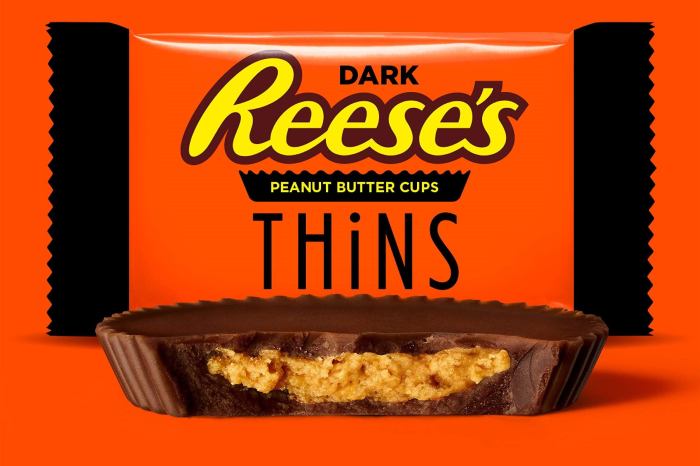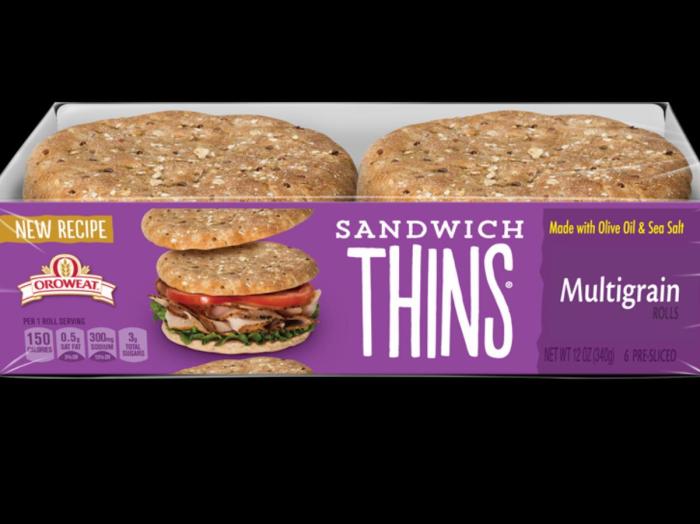Reese’s Thins Serving Size and Calories

Alright, peeps! Let’s dive headfirst into the delicious, yet slightly terrifying, world of Reese’s Thins nutrition facts. We’re talking calories, serving sizes – the whole shebang. Because let’s be honest, knowing how many you can demolish before feeling guilty is crucial information.
The thing about Reese’s Thins is, they’re deceptively small. You think, “Oh, it’s just a thin little square,” and then BAM! Half the bag is gone. So understanding the serving size is key to avoiding a sugar coma. The serving size isn’t always clearly defined because it varies depending on the package size. A standard bag might list a different serving size than a king-size one.
This means the calorie count per serving will fluctuate too.
Reese’s Thins Calorie Information by Serving Size
This table provides a general guideline. Actual calorie counts may slightly vary depending on the specific production batch and package size. Always check the nutrition label on your specific bag for the most accurate information. Remember, this is just a general idea, so don’t come crying to me if your actual bag differs slightly.
| Serving Size | Approximate Calories | Number of Pieces (Estimate) | Notes |
|---|---|---|---|
| 1 Piece | ~70-80 | 1 | This is a rough estimate; the actual calorie count might vary. |
| 1/2 Cup | ~280-320 | ~4-5 | This is an approximation, as the number of pieces per cup can vary depending on how tightly they’re packed. |
| 1 Cup | ~560-640 | ~8-10 | A full cup is a serious commitment. You’ve been warned. |
| Entire Standard Bag (approx. 10 oz) | ~1120-1280 | ~16-20 | This is an estimation based on a standard bag size. King-size bags will obviously contain more calories. |
Remember, these are estimates. The actual calorie count will vary depending on the specific product and the package size. Always check the nutrition facts label on your specific Reese’s Thins package for the most accurate information. And, you know, try not to eat the whole bag in one sitting. Your body will thank you.
Reese’s Thins Ingredients and Allergens

Okay, so you’ve crunched the numbers on calories and serving sizes, right? Now let’s get down to the nitty-gritty: what’sactually* in these deceptively delicious little chocolatey peanut butter discs? We’re talking ingredients, people, and the potential for some serious allergic reactions. Let’s dive in before someone accidentally triggers a full-blown peanut butter apocalypse.
Reese’s Thins Ingredient List and Allergen Information
The ingredient list can vary slightly depending on the specific batch and where you buy them, so always check the packaging for the most up-to-date information. But generally, you’re looking at something along these lines. Remember, always read the label before consuming, especially if you have allergies. This isn’t some kind of joke, folks. This is serious business.
| Ingredient | Potential Allergen (Yes/No) |
|---|---|
| Milk Chocolate | Yes (Milk) |
| Sugar | No |
| Peanut Butter | Yes (Peanuts) |
| Palm Oil | No (Generally, but some people may have sensitivities) |
| Soy Lecithin | Yes (Soy) |
| Whey | Yes (Milk) |
| Salt | No |
| Artificial Flavor | Potentially, depending on the specific flavoring agent. Check the label for specifics. |
| Other Ingredients (May Vary) | Potentially Yes (Check label for specific ingredients and allergens) |
Always check the product label for the most current and complete ingredient and allergen information. Manufacturers can change formulations, so relying solely on this information is risky. Your health is more important than a perfectly accurate blog post. Trust me. I’ve learned this the hard way. (Okay, maybe not
that* hard way, but still…)
Reese’s Thins, those delightfully thin chocolatey treats, might seem innocent enough, but checking their nutrition facts is a good idea. For a healthier contrast, consider exploring the nutritional profile of other snacks, such as the surprisingly nutritious bean sprouts – check out the detailed nutrition facts of bean sprouts for a comparison. Then, you can make an informed choice about whether to indulge in more Reese’s Thins or opt for a lighter, crispier alternative!
Comparison to Other Reese’s Products

Okay, so we’ve talked about the nutritional breakdown of Reese’s Thins. But how do they stack up against the OG peanut butter cup behemoths? Let’s dive into a delicious (and slightly terrifying) nutritional comparison. Prepare for some numbers, folks. This isn’t your average rom-com; this is a calorie showdown.The truth is, comparing Reese’s Thins to other Reese’s products is like comparing a sleek sports car to a lumbering SUV – both get you where you need to go (to chocolatey peanut buttery heaven), but the journey is vastly different.
One is a leaner, meaner machine, the other…well, let’s just say it’s more substantial.
Nutritional Comparison of Reese’s Products, Reese’s thins nutrition facts
Here’s a table comparing the nutritional information of Reese’s Thins, regular Reese’s Peanut Butter Cups, and Reese’s Big Cups. Remember, these values are approximate and can vary slightly depending on the specific product and size. Always check the packaging for the most accurate information. Don’t blame me if you miscalculate your daily calorie intake!
| Product | Serving Size | Calories | Fat (g) | Sugar (g) |
|---|---|---|---|---|
| Reese’s Thins (1 cup) | ~15 pieces | ~200 | ~10 | ~15 |
| Reese’s Peanut Butter Cups (1 cup) | ~2 cups | ~250 | ~15 | ~20 |
| Reese’s Big Cups (1 cup) | ~1 cup | ~300+ | ~18+ | ~25+ |
*Note: These values are estimates based on average serving sizes and nutritional information readily available. Always refer to the product packaging for precise details.*
Significant Nutritional Differences
The table clearly shows that Reese’s Thins are the “healthier” option, at least relatively speaking. They boast fewer calories, less fat, and less sugar per serving compared to their larger, more decadent counterparts. Think of it like this: Reese’s Thins are the sensible friend who orders a salad while the regular and Big Cups are the friends who go all-in on the triple-decker chocolate fudge sundae.
No judgment here, just facts. The difference is substantial, especially when considering multiple servings. Consuming several Big Cups will significantly impact your daily calorie and sugar intake compared to several servings of Thins. This isn’t about being “good” or “bad,” it’s about making informed choices. And hey, sometimes you just need that triple-decker sundae.
Question Bank: Reese’s Thins Nutrition Facts
Are Reese’s Thins gluten-free?
No, Reese’s Thins contain wheat and are not considered gluten-free.
How much sugar is in one serving of Reese’s Thins?
The exact amount of sugar varies slightly depending on the serving size; refer to the nutritional information on the package for the most accurate data.
Are Reese’s Thins suitable for vegetarians?
Yes, Reese’s Thins are generally considered suitable for vegetarians, as they do not contain any animal products.
Can I eat Reese’s Thins if I have a peanut allergy?
No, Reese’s Thins contain peanuts and are not safe for individuals with peanut allergies. Always check the ingredient list carefully before consuming.
